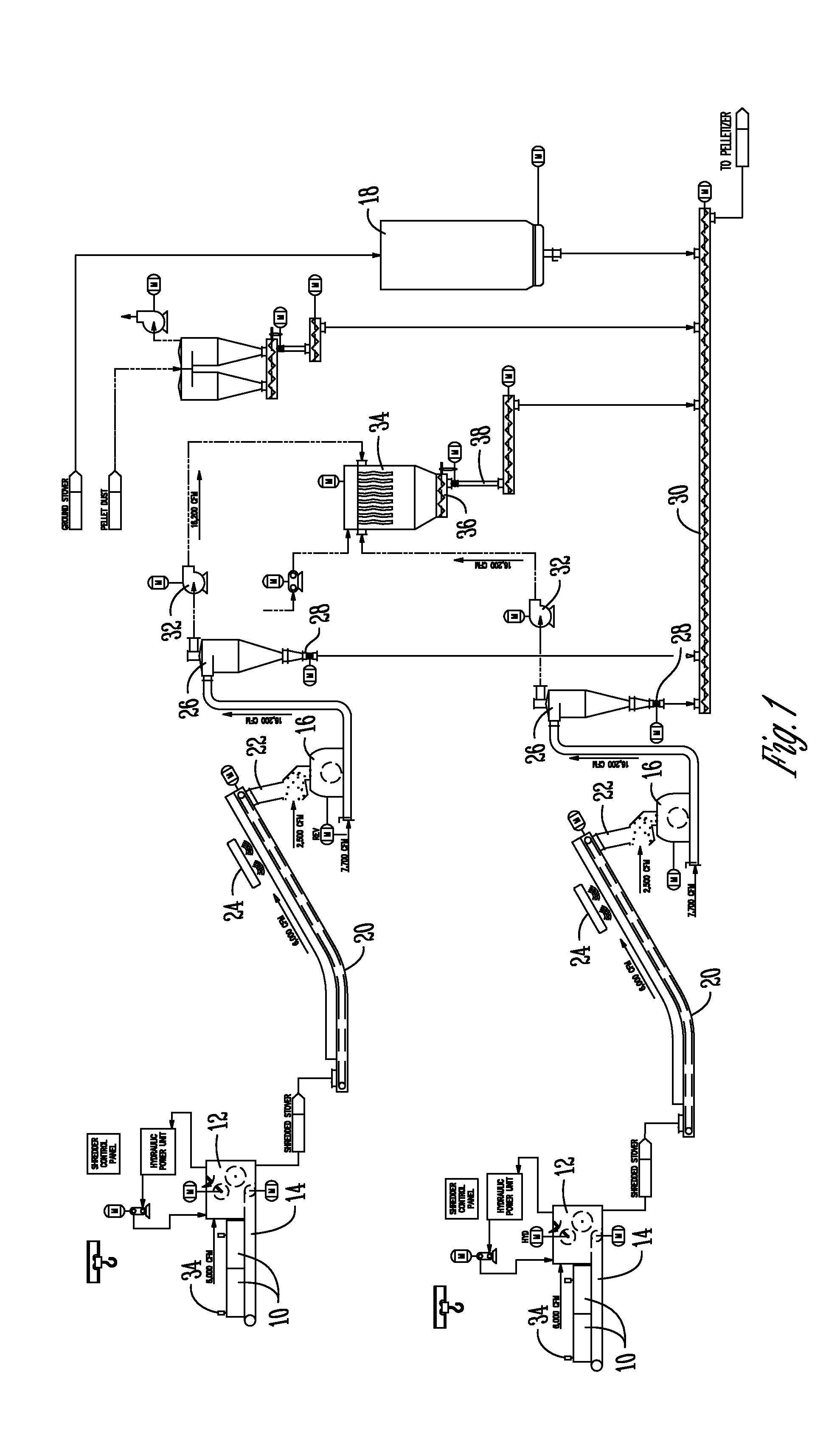System for shredding and grinding biomass
a biomass and system technology, applied in the field of systems for shredding and grinding biomass, can solve the problems of inability to grind agricultural residues with high moisture content on a continuous basis, inability to freely flow biomass feed stocks like corn stover, wheat straw, other energy crops, and other problems, to achieve the effect of reducing the number of slurry slurry slurry, and improving the quality of slurry
- Summary
- Abstract
- Description
- Claims
- Application Information
AI Technical Summary
Benefits of technology
Problems solved by technology
Method used
Image
Examples
Embodiment Construction
[0015]The raw material is received as truckloads of baled agricultural residue or other biomass and converted into a final pelletized product that can be handled and transported using standard grain handling equipment. Because the handling and transportation costs for the pelletized product is reduced, two or more of these stover collection and processing facilities can be linked into a delivery system for end users needing commercial volumes of pelletized biomass feedstock. These facilities will process the material at the site, thus providing a further transportation competitive advantage, while limiting commercial risk.
[0016]The major processing equipment is connected using the established material handling systems. The layout is designed to provide an efficient and continuous process with ample room for efficient maintenance.
[0017]The invention allows material sizes ranging from raw material bales as inputs to finished pellets as the final output product. The design incorporates...
PUM
 Login to View More
Login to View More Abstract
Description
Claims
Application Information
 Login to View More
Login to View More - R&D
- Intellectual Property
- Life Sciences
- Materials
- Tech Scout
- Unparalleled Data Quality
- Higher Quality Content
- 60% Fewer Hallucinations
Browse by: Latest US Patents, China's latest patents, Technical Efficacy Thesaurus, Application Domain, Technology Topic, Popular Technical Reports.
© 2025 PatSnap. All rights reserved.Legal|Privacy policy|Modern Slavery Act Transparency Statement|Sitemap|About US| Contact US: help@patsnap.com

